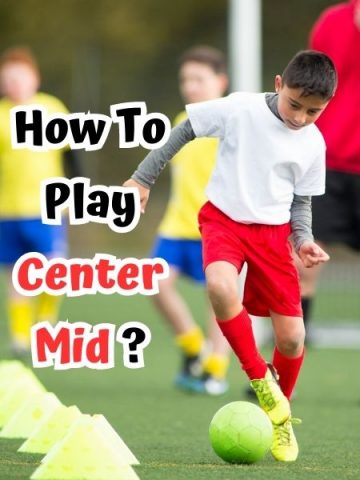The midfield position in soccer is crucial to a team’s level of performance in a match. Coaches are often very picky when it comes to choosing who will occupy the midfield position, especially when they are playing tougher teams or playing major tournaments.
In association football also known as soccer, midfielders can either play the role of breaking up an opponent’s attack, engineering attacks, defending and a whole lot of other responsibilities.
Key Takeaways
- The center midfield position is one of the most challenging and demanding positions in a soccer team
- To play center mid in soccer, the player must have good vision, ball control, and master accurate passing techniques
- Players who desire to occupy the center mid position need to invest in adequate training to hone the skills required to succeed in the role
Roles that midfielders are assigned to play usually depend on the kind of formation a coach is using. Midfielders run the most and give important passes during soccer matches so they need to be fit, fast, agile, and effective communicators to be able to accomplish such a feat.
The Midfield position has many departments which include the holding midfielder, wide midfielder, center midfielder, defensive midfielder, attacking midfielder, and winger. Their roles might be similar though but they are all important for a team’s success.
When midfielders aren’t adequately performing as expected, their usual form, confidence, and aggressiveness can diminish. The role of the center or central midfield in particular is crucial for the success of a team.
Do you know what it takes to occupy the center midfield position in soccer or the roles assigned to them? Keep reading to find out what it takes to occupy this position.
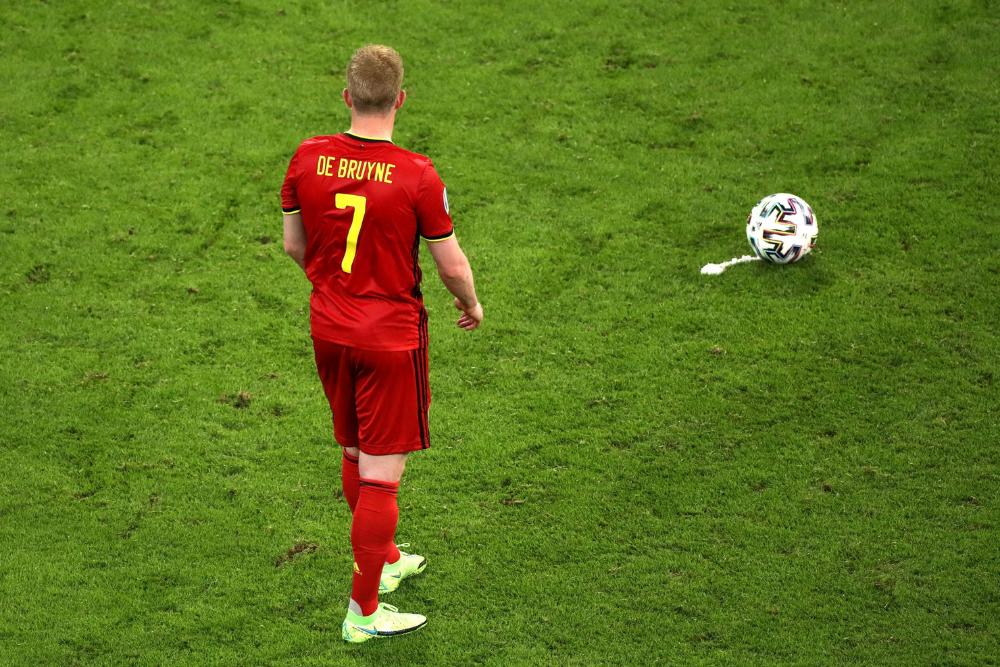
Quick Navigation
How To Play Center Mid In Soccer?
You must first know how to play the central midfield role in soccer before you can be picked by a coach to play that role. Aside from dominating play in the pitch’s center, center midfielders also switch roles between defense and attack.
They are often paired with the playmaker and their major task in most circumstances is assisting the forwards and defenders. This role requires you to have great confidence and be a good team player.
Even though all the positions occupied by soccer players on the pitch are largely important, the center midfield role requires a lot of experience. It is one of the roles that dictate the pattern of play of a soccer team.
Teams with experienced, hardworking, and skilled central defenders are often more likely to come out victorious in any encounter.
Some of the best central midfielders that we have seen in the history of soccer include Frenkie de Jong, Yves Bissouma, Paul Scholes, Andrés Iniesta, and Frank Lampard to name a few.
Central midfielders hold the responsibility of controlling the pace of games using their pace and accurate passes. Due to their level of work on the pitch, they are arguably the hardest-working players.
To become a world-class center mid, you must be able to link players on the pitch as well as maintain the tempo and rhythm of the game. Performing at the top level in this role requires diverse attributes. We shall list and explain some of them below.
Take long shots
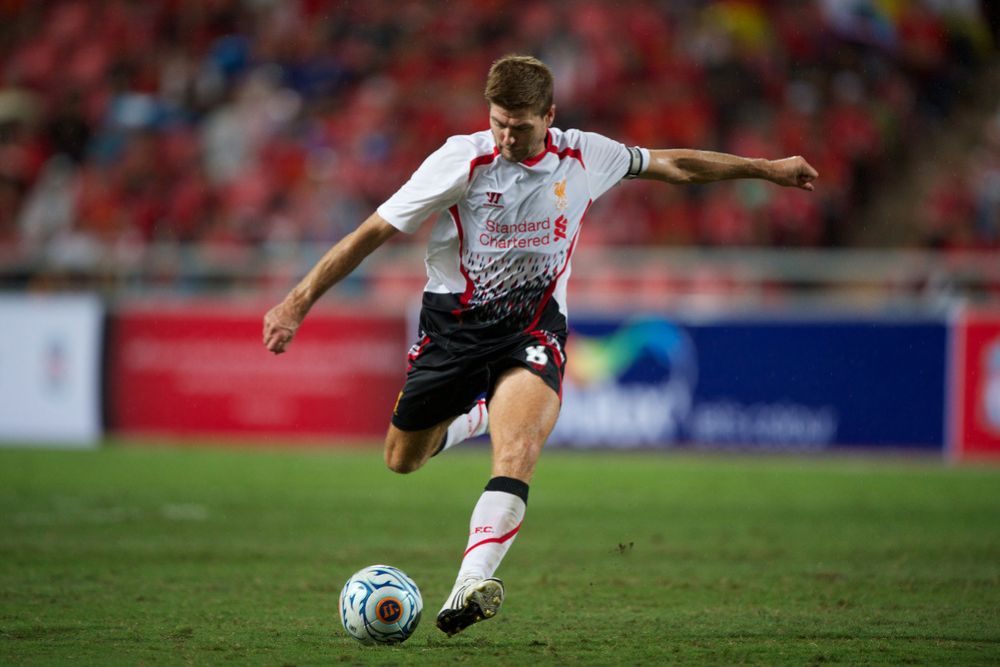
As a center midfield player in soccer, you should be skilled at taking shots, especially long shots. Long shots will allow you to score goals and offer goal assists from a distance.
To successfully execute a long shot with your shoelaces, your eyes must be fixed on the middle to the top of the ball. Make sure you don’t aim your shots low because they would stand a higher chance of getting deflected.
Perfecting long shots requires an extended period of practice. Don’t expect your shooting technique to improve overnight without putting in the work.
Power and technique play a major role in taking successful long shots. There are instances where it is better to hit the ball high, like when crossing the ball into the 18-yard box or when the goalkeeper has come off his lines.
When the 18-yard box is not congested or when facing a tall goalkeeper, it is better to it the ball low and close to the upright. It will be harder for the goalkeeper to go down and parry the ball.
As a central midfield player, stretching your long shooting abilities will quickly put you on the spotlight.
Physical fitness and body conditioning
The physical fitness and body condition of center midfield soccer players matter a lot because their position requires a lot of running and physical exertion. Players who are in good shape and physical form will find it easier to withstand the shoving and shading that happens in this position.
Engaging in soccer training, exercising, and eating right are effective ways of attaining the required level of physical fitness. These activities help in developing strong muscles and bones.
Cardiovascular health and respiration are also improved when players prioritize physical fitness. Staying physically fit isn’t just good for prepping players for the center mid position, it also reduces the risk of ailments like cancers, heart disease, and diabetes.
Examples of good exercises for your physical fitness and body conditioning include jumping jacks, lunges, burpees, squats, and push-ups. Engaging in such exercises will help you not to easily run out of breath while playing the center mid position.
Ball control and accuracy
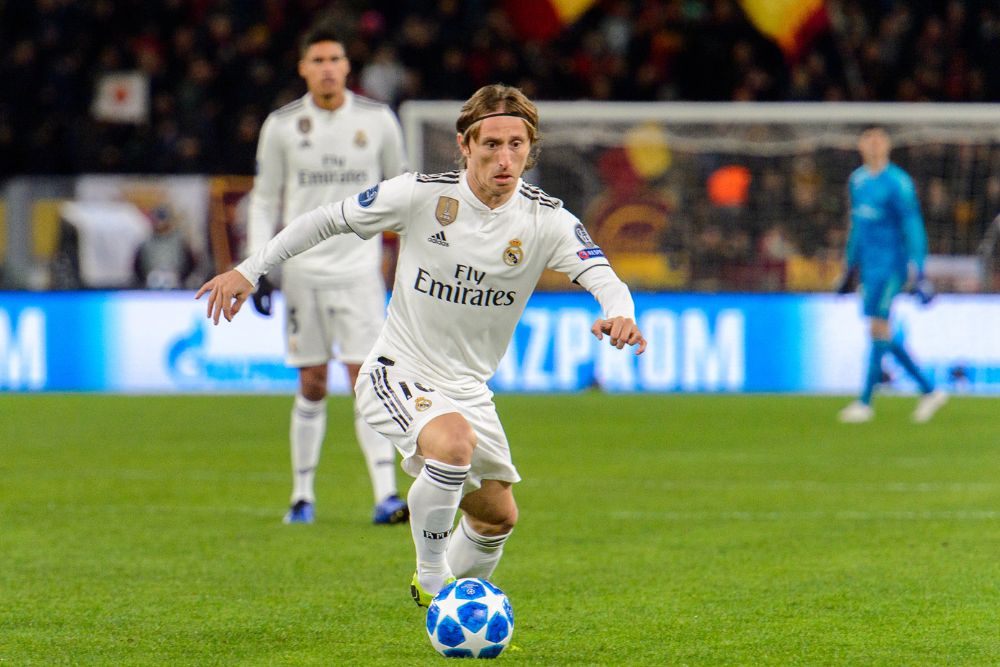
In soccer, the team with better ball control will always have greater chances of winning a match. Center mid players are expected to have a good first touch so they can confidently protect the ball from opponents.
Also, center-mid players are expected to accurately spread the ball across the pitch and use the full weight of the field to catch the opponents off-guard. When a team has better control of the soccer ball, it gives them more time to strategize their ball movement.
Midfielders like Thomas Müller and De Bruyne are exceptional players who know how to give accurate passes and even score goals. Strikers and wingers aren’t the only players responsible for scoring in modern soccer. Every player on the pitch is capable of scoring.
While playing defensively, a good center midfield player can make important interceptions. Ball control and accuracy can simply be improved through regular training.
Intelligence and creativity
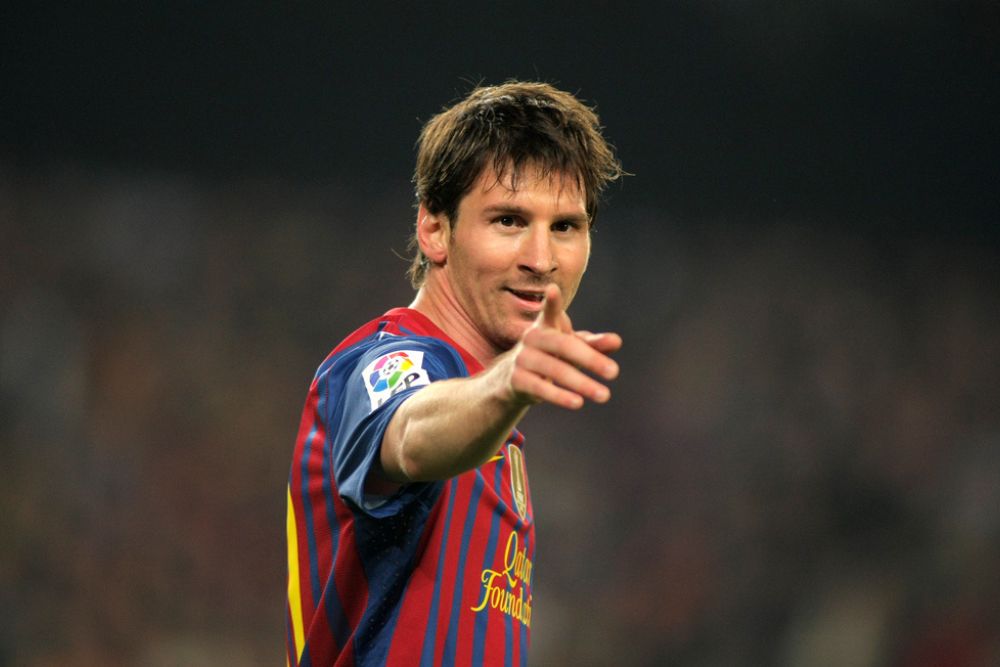
Creativity and intelligence are also mandatory skills for the center midfield position. They also require skillful observation, calculation, and logical thinking.
The center midfield position is a tedious position to play in soccer. They usually have the highest work rate in any match compared to players in other position on the team. A breakdown in the midfield will give the oppornent the control of the game.
Players occupying these roles are also excellent dribblers because they possess a high level of creativity and intelligence. Center midfield players like Luka Modrić and David Silva are some excellent dribblers who can change the tempo of soccer matches.
With their eyes always on the lookout, they can give the desired level of support to both attackers and defenders. Such kinds of players are very difficult to topple without a fair level of challenge.
Since center midfield players usually face the most attacks from opponents, they tend to use their dexterity to maneuver such attacks. The more intelligent and creative center midfield players are, the higher the value they will bring to a team.
Confidence
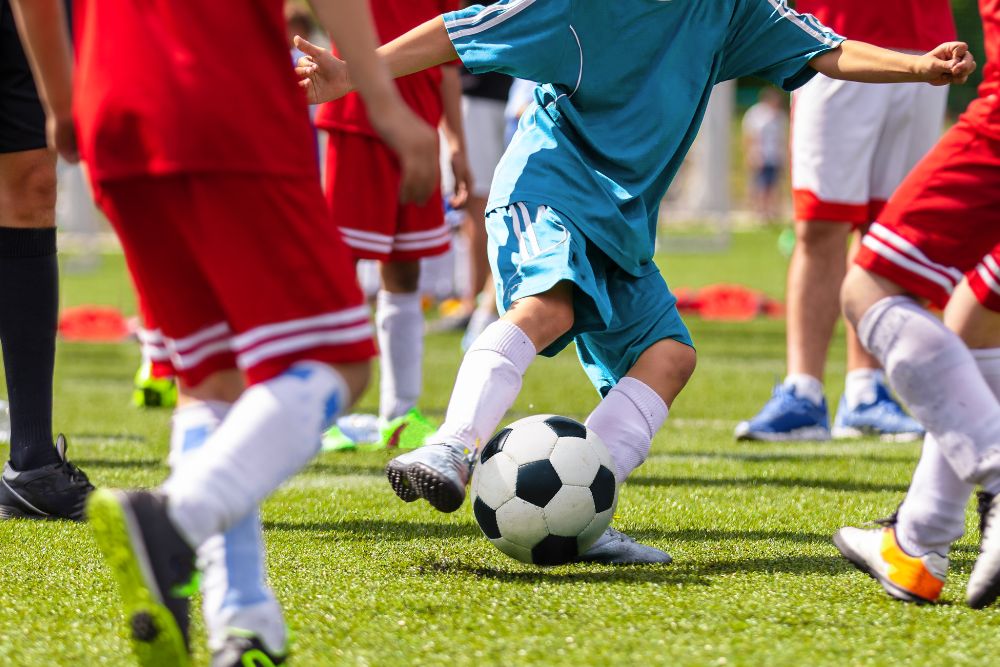
Having confidence in soccer simply means having a positive view of your skills and talent on the soccer pitch. The center midfield position challenges players to confidently make crucial decisions within the shortest possible time.
As a central midfield player, you must be able to distribute the soccer ball and also shield it from opponent players even while under pressure. Players possessing a high level of confidence always make good center midfield players.
Such players tend to be more ambitious on the pitch and also respond efficiently to tough situations. Confidence can be built through mastery and mastery can be developed through constant practice and repetition.
Suitable drills for center midfield players
The responsibilities conferred on the shoulders of center midfield players usually require a lot of mastery to carry out successfully.
We have listed out a couple of soccer drills that center midfield players can engage in to enhance their skill level and performance on the soccer pitch.
Long shot soccer drill
Taking shots from a distance is an essential skill that soccer players must have, especially attackers and midfielders.
This skill puts them at an advantage on the soccer pitch because they would make more goal attempts.
The drills below are designed to help both attackers and midfield players in taking better long shots that can translate to goals.
- Power play
The power play is a fun drill where players are sent off if they miss scoring chances twice. It is competitive and exposes players to real-life challenges on the soccer pitch
Instruction:
- Two players must stand 20 meters away from the goalpost where a goalkeeper is located. They are to face each other from the left and right sides of the pitch
- When one player gives the other player a long pass, he or she must try to score using a one-touch long shot
- If the ball is saved by the goalkeeper or misses the post, another long pass will be given by the other player but this time around, they must try to score skillfully without playing a long shot
- If they miss both scoring chances, they would have to switch places with the other player
- 6 or 8 players can take turns in groups of twos when performing this drill
- Zoned play
The zoned play is a soccer drill that helps center midfield players in taking more accurate long shots. It requires a space—half of an actual soccer pitch. This space should be equally divided into 2 zones using cones or paint.
Both zones should each have a goalpost placed on them. You can use cones to serve as goalposts if movable posts aren’t readily available. This drill is suitable for 10 players alone, due to the size of the playing arena.
Four players can serve as defenders, 2 as goalkeepers, while the remaining 4 serve as strikers. Attackers will try to score while defenders and goalkeepers will try to block them. One striker tries using long shots to score while the other waits for a rebound.
Instruction:
- The five players from each half of the field must maintain their zone and right position
- When the whistle goes off, the goalkeeper passes the ball to one of the strikers in his zone who must try to score a goal using a long shot to the other zone
- The second striker must run into the opponent’s zone immediately after the first striker starts making moves to play a long shot. The second striker can either direct the ball into the opponent’s net or position to kick the rebound into the net
- Opposing defenders can stop a striker before they take a shot. So strikers must be good at dribbling
- Sliding tackles are not allowed. If defenders successfully retrieve the ball, they must pass it to the striker in their zone to try and take a long shot
- At the end of the drill, the team with more long-shot goals is declared the winner
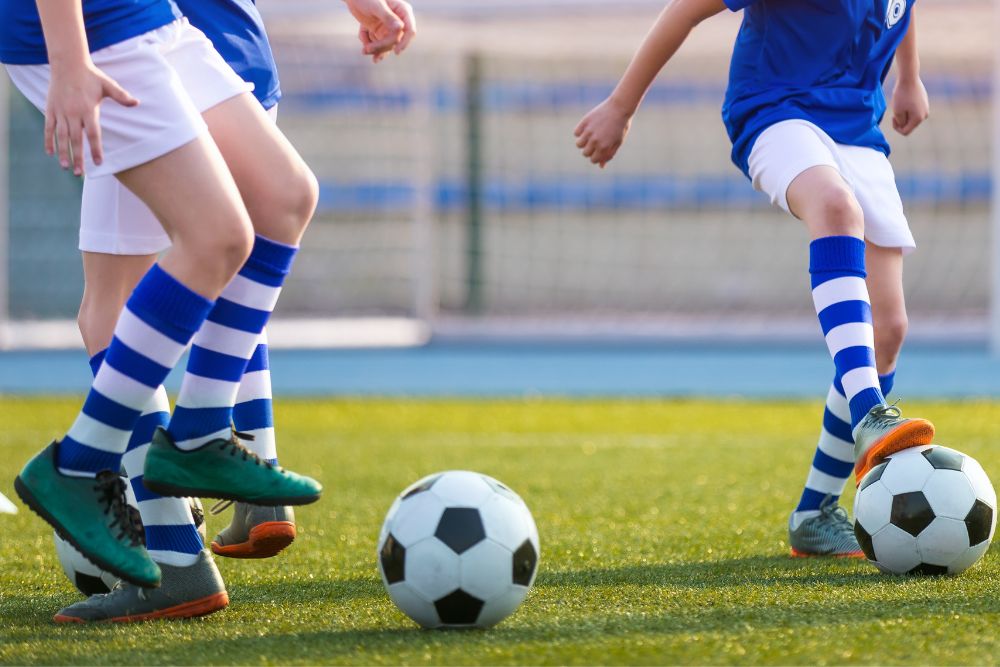
Passing drills
Great center midfield players are good at giving passes to available teammates which can create goal-scoring opportunities. By learning how to give intelligent passes, center midfield players can wear their opponents out on the pitch without working too hard.
Good passes also help in controlling the speed of a game and increasing ball possession. To improve your passes as a center midfield player, you can engage in private training with your friends and teammates using the passing drills below.
- One-touch passing
The purpose of this drill is to enable players to learn how to support their teammates by giving quick passes. A player’s movement, speed, and quick decision-making ability are also tested by this drill.
Instruction:
- Create a square-shaped playing area using cones. The size of the square should be determined by players’ skill level, the number of players, and their average age. 5v5 is the recommended number of players
- Divide the players into two teams and give both teams different jerseys for easy identification
- Once a whistle is blown, the team in possession of the soccer ball must start moving about the pitch while exchanging one-touch passes
- The team without a ball must try to quickly regain the ball and do their one-touch passes
- At the end of the round, teams are graded by the number of successful one-touch passes they manage to accomplish while possessing the soccer ball.
- AGILITY TRAINING: Includes 20 high visibility orange training cones - essential for any training...
- COACH FAVORITE: Low profile design keeps the field safe while still serving as flexible and durable...
- STORAGE TOTE: Includes sturdy mesh tote bag with drawstring to keep cones organized and easy to take...
Last update on 2023-11-11 / Affiliate links / Images from Amazon Product Advertising API
- 1-In-1-Out
The aim of participating in this soccer passing drill is to enhance the player’s focus, movement, passing, and ball control. It is a suitable drill for all age grades and skill levels.
Instruction:
- 4 players are first arranged in a square shape while another player stands in the middle of the square. Only two out of all the players that formed the square (standing next to each other) will have balls.
- One of the players in possession of the soccer ball will have to pass it to the player in the center of the square. Once the middle player receives the pass, he or she would have to turn 180 degrees and pass the ball to the player they are facing.
- Then, they are supposed to run and replace the player they passed the ball to, while that player leaves the ball behind and runs to the middle of the square so they can receive another pass from the other player on the square who hasn’t given any passes yet.
- The 5 players are to continue passing and rotating positions as long as required.
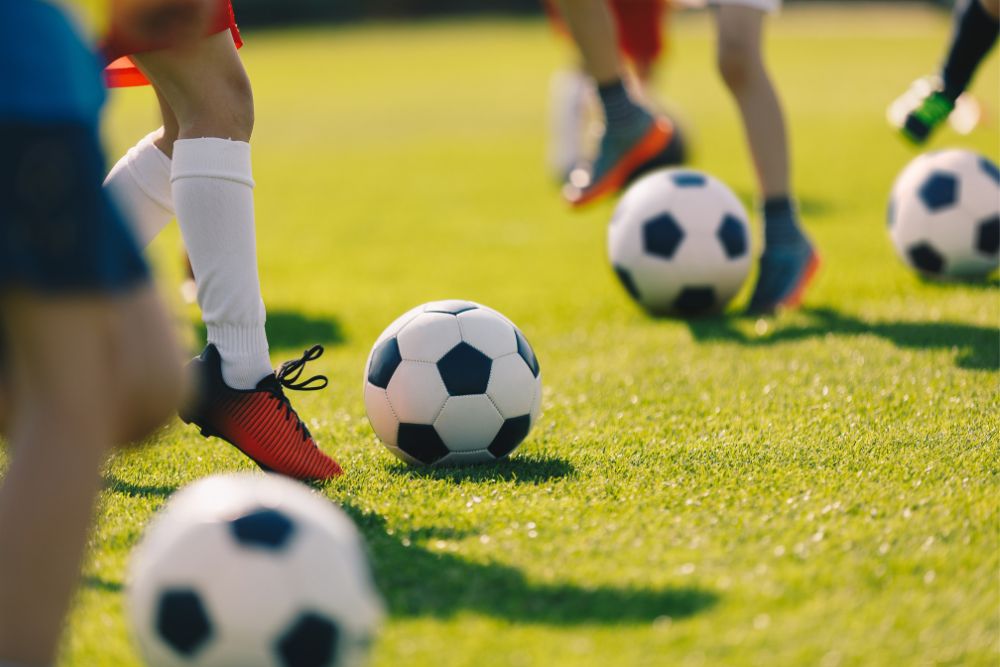
Ball control drills
Center midfield players must be good at handling balls—no matter what angle or speed such balls might be approaching. Such players can control balls with most parts of their body including the head, chest, feet, and thigh.
The ball control drills we would be sharing with you are easy to practice and have proven to be very effective, especially when combined with dribbling drills.
- Basic Juggling
This drill helps to build the player’s maneuverability, confidence, balance, and stamina, and also develops the first touch.
Instruction:
- Get yourself a properly inflated soccer ball, you can either kick the ball up from rest or drop it with your hands on your bent thigh
- Use your legs and your feet to keep the ball off the ground as long as you possibly can
- You can include other parts of your body like your head and your chest after you get comfortable with juggling the soccer ball on your feet, thighs, and knees
- Learn to alternate the bouncing ball along the right and left parts of your body for maximum effect
- Competing with friends and teammates will help you work harder and achieve better results
- Kick and catch
This soccer drill can be done by kids too. It trains players to improve their focus and concentration on the soccer pitch.
Instruction:
- Place the soccer ball in your hands and stretch your arms out
- Stand in an erect position with your feet placed together
- Allow the ball to drop from your hands while you gently kick it back up with your foot
- When the ball rises to your shoulder level, catch it and repeat the third step
- Practice with both feet and keep increasing your speed while repeating the steps
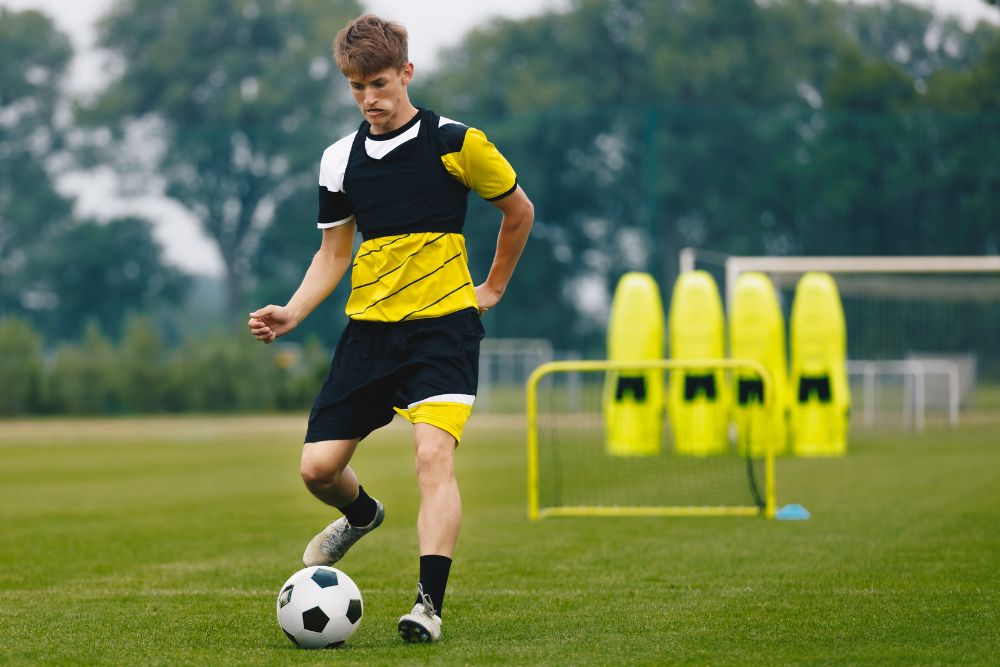
Dribbling drills
Dribbling is a skill that makes soccer exciting, in addition to giving soccer players a kind of superpower. This skill separates amateur soccer players from the greats. It is often the reason why players get remembered even after they have long retired from playing soccer.
To become good at dribbling, you must work on your body control, agility, endurance, balance, and speed. Below are dribbling drills that can help you play better as a central midfield player.
- Bulldog attack dribble drill
The bulldog attack drill isn’t difficult to practice and it is designed to be creative and fun. It will improve a player’s awareness, ball control technique, and dribbling skills if properly practiced.
Instruction:
- A square or rectangular playing area should be set up using cones according to the number of participating players. Rectangular playing areas can contain up to 6 participants while square areas should contain just 4.
- All players in the playing area must have one ball each. However, there will be players outside the playing area without a ball and he or she is called the “Bulldog”
- When the whistle is blown, the players in the playing area are all expected to dribble around the playing area with the ball for about 5 to 10 seconds
- The “Bulldog” is then allowed to enter the playing arena to struggle for possession of the soccer ball with other participants
- If the Bulldog gets hold of your ball, he or she will kick it out of the arena and you will also be exempted from the arena for a few seconds
- When allowed back into the arena, you will also become a Bulldog—struggling for balls from other dribblers
- The last remaining dribbler in the arena will become the winner
- This fun drill can be repeated as long as the participants want to
- Forth and back cone dribbling drill
This dribbling drill is exhausting but effective because it works on your dribbling, speed, and maneuverability. You need at least 5 cones arranged on a straight line 4-5 meters apart to successfully pull off this drill.
Instruction:
- Start by sprinting and dribbling the soccer ball from Cone 1 to Cone 2
- Make a quick turn when you get to Cone 2 and sprint back to Cone 1
- Now, quickly dribble from Cone 1 until you get to Cone 3
- Make another quick turn and head back to Cone 1. Continue this pattern of movement until you get to Cone 5
- When you get to cone 5, take a minute break before starting another set
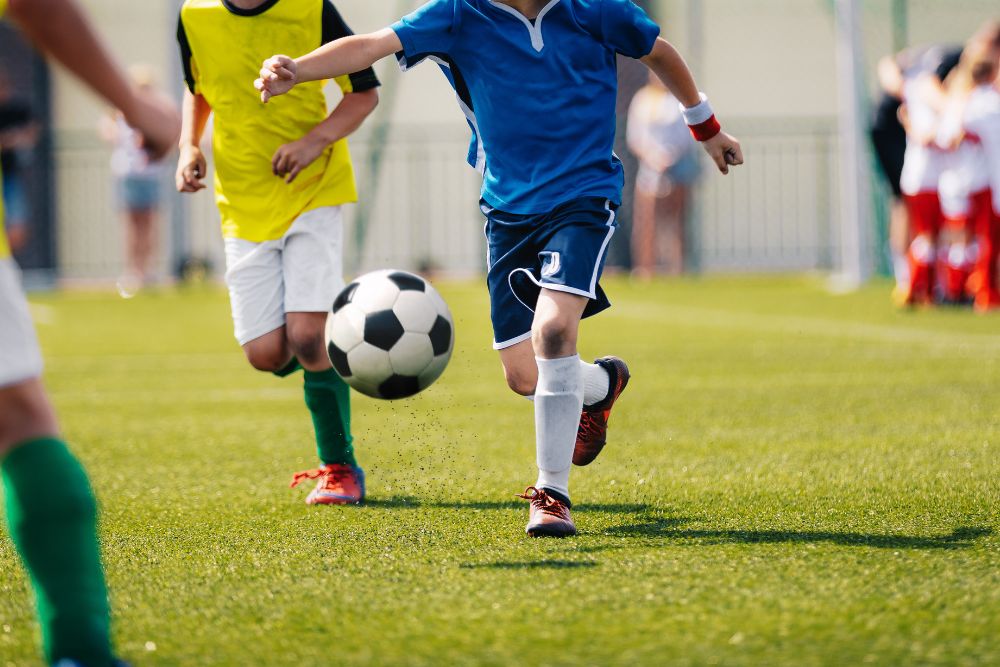
Conclusion
On the soccer pitch, it is expected of central midfield players to be in sync with their teammates, as well as become well knowledgeable about their position. Center midfield players usually get it wrong when they try to do everything and be everywhere on the pitch.
They can run up to 12 kilometers in a match if they don’t know how to properly position themselves on the soccer pitch. A center mid player that lacks accurate ball control will become the weak link that the opponents will try to exploit.
Knowing how to play the center midfield position alone isn’t enough, you need a lot of practice and training to surmount this role. Being the brain and playmaker of your team, every decision you make must be carefully thought through before execution.
Hi there, I’m Jay.
Soccer is everything in my life! My friends and I have created this blog with all our enthusiasm, passion, and understanding after years of playing pro soccer. Hope you will enjoy it!
